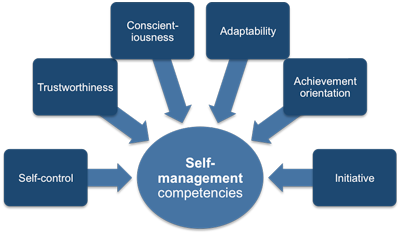Leadership Essentials

From Life to Lessons – Living & Leading with Emotional Intelligence Conversation and Connection: Own Your Story
“When you work with someone long enough and form a relationship, they become curious: they want to learn more about you. This is not meant to be an invasion of privacy or a hunt for information to use against you later. It is a desire to connect and establish common

From Life to Lessons – Living & Leading with Emotional Intelligence Chapter 3: Hello Vulnerable, Meet Reward
“The inexperience of youth gives us the freedom to ask the hard questions even when the answers are harder to hear. Over time, our concerns about what people will think overshadows the freedom of our youth. We become hesitant to share our truth or ask the hard questions. Our concern produces

Striking the Optimal Balance for Leadership, Maintain a Body and Soul Connection
Meditate and exercise. When pressure mounts, leaders often focus their priority on achievement and neglect their well-being. Meditation and exercise boost stress tolerance and optimism, both of which help you to refocus attention and manage competing priorities. Ensure proper rest and community engagement. Use flexibility to ensure you receive proper sleep to

Striking the Optimal Balance for Leadership, Maintain a Accurate View of What’s Possible
Prioritize responsibilities. Prioritize tasks according to importance, and tackle obligations in order of impact on organizational goals. Address the most significant issues objectively and implement fact-based solutions. Change your mindset. When you feel compelled to shoulder the responsibility for achieving the strategic vision of the organization, use problem solving to reduce

Striking the Optimal Balance for Leadership, Know Your Limits
Set boundaries and leave work at the office. When work continually intrudes on your personal life, quality of life suffers at the expense of your happiness. Activate your assertiveness skills to address unreasonable workloads (as much as appropriate) and demonstrate flexibility by taking breaks, breaking for lunch, and signing off in the

Competence is More Than Performance, Increase Your Airtime
Increased collaboration creates buzz throughout the organization about you. Over time, people will be talking about you in a good way when you are not around. With whom should you be collaborating? If you were to create a list of thought partners, who would be included? Click here to purchase

Competence is More Than Performance, Practice Vulnerability
A lot of people do not realize that many organizations consider resilience a core competency of leadership. You cannot demonstrate resilience without experiencing failure. The courage to fail grows out of your willingness to be vulnerable.

Competence is More Than Performance, Make Visibility a Priority
When it comes to your career, it is about “who knows you.” Take advantage of opportunities to cultivate relationships with peers, colleagues and senior leaders. You can learn a lot (and share a lot) about someone (and yourself) in the time it takes to walk to the cafeteria to grab

Competence is More Than Performance, Demonstrate Authenticity
The more exposure people have to different aspects of your personality, the more they will understand you. In the absence of information, people will create their own stories. It is hard as hell to deconstruct an inaccurate perception. Manage perceptions by freely sharing who you are… with boundaries.

Chapter 1: An Accusation of Incompetence, Transparency
The day my leader informed me that her boss thought I was incompetent felt like a gut punch. My heart leaped from my chest to my throat and anguish flooded my body. I do not remember anything beyond her comment. As I walked out of the meeting room, flashbacks of

In The C-Suite Business Leadership Trumps Functional Leadership
The executive search firm Heidrick & Struggles conducted interviews to explore the trends of C-level success. One consistent finding across C-level roles surfaced. Once people reach the C-suite, technical and functional expertise matters less than leadership skills and a strong grasp of business fundamentals. Members of senior management are expected

C-Suite Success Requires Self-Management
A final component in the McKinsey report on successful C-level transitions dealt with self-management. Just over half of the executives in the study reported they spent too little time preparing for the personal demands and their own readiness in the new positions. The executives with the most successful transitions, however,

The Role Culture Plays In Successful C-Level Transitions
One aspect of the McKinsey study that explored successful transitions into the C-suite looked at culture. It is an aspect of the transition process that can pose a challenge. Many executives believed they did not have accurate ways to measure or even describe it. This was especially true for external hires.

Successful C-Level Leaders Leverage Their Teams
C-level executives in the McKinsey study on the successful transition to the C-suite acknowledge they did not have all the answers when they began their new positions. Most executives in the study said they relied on the input of their direct reports when determining solutions to the strategic problems they

Successful C-Level Leaders Share Their Vision On Business Priorities
Executives in the McKinsey study on what factors contribute to the successful transition into the C-suite, ranked business-related activities as the most impactful. The majority of executives said it was “very or extremely important to create a shared vision and alignment around their strategic direction across the organization.” Executives reporting

Leading Diverse Talent – What it Takes
Demonstrate Vulnerability Leaders who successfully lead and develop diverse talent are students of vulnerability. They let their guard down, put aside pretenses and share their stories to establish common ground. These leaders are comfortable with not having all the answers, they listen actively, and freely embrace the perspectives, opinions, and

Leading Diverse Talent – What it Takes
Sponsor “the Risk” The conversation regarding the advancement of diverse talent is often thought of in terms of risk. Leaders that successfully lead and develop diverse talent willingly sponsor “the risk.” They understand that the perceived risk is no more or less than it would be for other individuals. They

Leading Diverse Talent – What it Takes
Challenge stereotypical thinking Leaders who successfully lead diverse talent have the courage to challenge the biased thinking of others. Negative comments and jokes targeting specific groups are squelched; and micro-aggressions are called out, not ignored. I was once in the presence of a leader who suggested that what was interpreted by one

Leading Diverse Talent – What Works
Participation in experiences that broaden perspective The efforts of leaders that demonstrate success leading diverse talent are often supported by their organizations through professional and leadership development experiences that raise awareness and influence perspective. These leaders willingly participate in internal training like Unconscious Bias which broadens their perspective and shifts their thinking.

Leading Diverse Talent – What Works
Expanded exposure and visibility – It takes a village Leaders who successfully lead diverse talent understand that they do not have all the answers and they provide access to their internal network for additional support. These leaders understand that retention, development, and advancement of diverse talent are organizational responsibilities that





